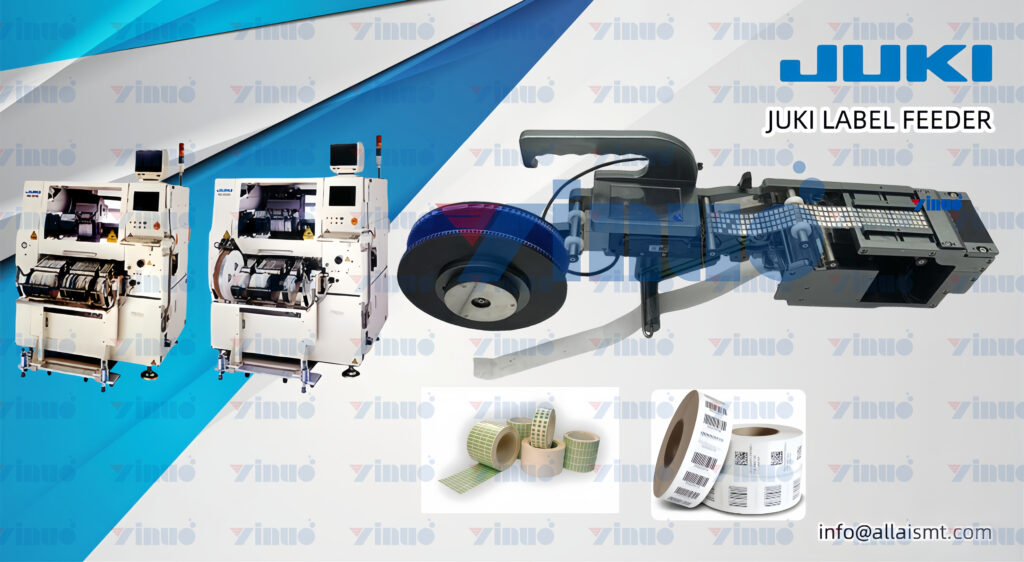Label Feeders: Reducing the Time Needed for Label Changes
In a dynamic production environment, especially within industries with diverse product lines, the ability to quickly and efficiently change labels is crucial. Whether it’s due to shifts in product specifications, seasonal variations, or promotional updates, the time required for label changes can significantly impact production efficiency and cost. Label feeders, an integral part of automated packaging systems, offer several advantages in reducing the time needed for label changes. Here’s how label feeders streamline this process and contribute to a more agile and responsive production line.
1. Quick-Change Mechanisms
Modern label feeders are equipped with quick-change mechanisms that allow for rapid adjustments between different label types and sizes. These mechanisms are designed to minimize downtime during label changes, enabling production lines to switch from one label format to another with minimal disruption. Quick-change features often include easy-to-use adjustment controls and pre-set configurations, which streamline the transition process and reduce the time spent on manual adjustments.
2. Modular Design for Flexibility
Label feeders with a modular design offer enhanced flexibility for handling different labeling requirements. These modular systems can be easily reconfigured or upgraded to accommodate new label types or formats without requiring extensive retooling or downtime. The ability to quickly adapt to new labeling needs makes it easier to implement changes and keep up with evolving product lines or promotional campaigns.
3. Automated Label Adjustment
Many advanced label feeders come with automated adjustment features that automatically recalibrate for different label sizes and configurations. This automation eliminates the need for manual remeasurement and adjustment, which can be time-consuming and prone to errors. By automating these adjustments, label feeders significantly speed up the process of changing labels, allowing production to resume more quickly.
4. User-Friendly Interfaces
Label feeders equipped with user-friendly interfaces simplify the process of making label changes. Touchscreen controls, intuitive software, and pre-programmed settings allow operators to quickly select and apply new label specifications. These interfaces often include visual aids and step-by-step instructions, making it easier for operators to perform label changes efficiently and accurately.
5. Pre-Loaded Label Templates
Some label feeders support the use of pre-loaded label templates, which can be easily selected and applied when switching between different labeling tasks. These templates store specific settings for various label types, such as size, placement, and orientation. By accessing pre-loaded templates, operators can quickly implement label changes without the need to manually configure each new label, reducing the time required for adjustments.
6. Streamlined Label Feeding and Application
Efficient label feeders are designed to streamline the feeding and application process, reducing the time it takes to apply new labels. Features such as high-speed label dispensing, precise alignment mechanisms, and fast drying or curing options contribute to a quicker label changeover. This efficiency ensures that the production line remains active and productive during transitions between different labels.
7. Reduced Maintenance and Downtime
Label feeders that require minimal maintenance and are designed for easy cleaning and upkeep further contribute to reducing downtime. Systems that are easy to maintain and keep in good working condition help prevent unexpected delays or complications during label changes. Regular maintenance routines and quick access to parts for repairs also support continuous operation and minimize disruptions.
8. Enhanced Production Scheduling
The ability to quickly change labels allows for more flexible production scheduling. Manufacturers can more easily adjust production runs to accommodate different products, promotions, or seasonal variations without significant delays. This flexibility in scheduling helps optimize production efficiency and responsiveness to market demands.
Conclusion
Label feeders play a crucial role in reducing the time needed for label changes, offering significant benefits to manufacturers facing dynamic and diverse production needs. By incorporating quick-change mechanisms, modular designs, automated adjustments, and user-friendly interfaces, label feeders streamline the process of switching between different labels. These features not only minimize downtime but also enhance overall production efficiency, allowing manufacturers to remain agile and responsive to changing requirements. In an environment where time is of the essence, label feeders provide the tools necessary to keep production lines running smoothly and efficiently.


